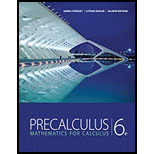
To calculate: The simplified value of the expression
Answer to Problem 51E
The value of the expression
Explanation of Solution
Given information:
The expression
Formula used:
To multiply two polynomial expressions, first multiply each term of first polynomial by second polynomial and then add the results. This property is known as distributive property, which is mathematically expressed as,
Law of exponent which states that to find the product of two terms with same base and different exponents, then add the exponents only keeping the base same, which can be written mathematically as,
Calculation:
Consider the given expression
Recall that to multiply two polynomial expressions, first multiply each term of first polynomial by second polynomial and then add the results. This property is known as distributive property, which is mathematically expressed as,
Apply it,
Recall the law of exponent which states that to find the product of two terms with same base and different exponents, then add the exponents only keeping the base same, which can be written mathematically as,
Apply it,
Thus, the value of the expression
Chapter 1 Solutions
EBK PRECALCULUS: MATHEMATICS FOR CALCUL
 Calculus: Early TranscendentalsCalculusISBN:9781285741550Author:James StewartPublisher:Cengage Learning
Calculus: Early TranscendentalsCalculusISBN:9781285741550Author:James StewartPublisher:Cengage Learning Thomas' Calculus (14th Edition)CalculusISBN:9780134438986Author:Joel R. Hass, Christopher E. Heil, Maurice D. WeirPublisher:PEARSON
Thomas' Calculus (14th Edition)CalculusISBN:9780134438986Author:Joel R. Hass, Christopher E. Heil, Maurice D. WeirPublisher:PEARSON Calculus: Early Transcendentals (3rd Edition)CalculusISBN:9780134763644Author:William L. Briggs, Lyle Cochran, Bernard Gillett, Eric SchulzPublisher:PEARSON
Calculus: Early Transcendentals (3rd Edition)CalculusISBN:9780134763644Author:William L. Briggs, Lyle Cochran, Bernard Gillett, Eric SchulzPublisher:PEARSON Calculus: Early TranscendentalsCalculusISBN:9781319050740Author:Jon Rogawski, Colin Adams, Robert FranzosaPublisher:W. H. Freeman
Calculus: Early TranscendentalsCalculusISBN:9781319050740Author:Jon Rogawski, Colin Adams, Robert FranzosaPublisher:W. H. Freeman
 Calculus: Early Transcendental FunctionsCalculusISBN:9781337552516Author:Ron Larson, Bruce H. EdwardsPublisher:Cengage Learning
Calculus: Early Transcendental FunctionsCalculusISBN:9781337552516Author:Ron Larson, Bruce H. EdwardsPublisher:Cengage Learning





